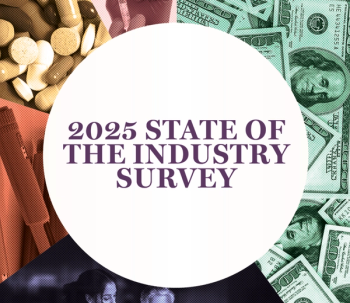
Working Paper Finds COVID-19 Lockdowns Had Little Public Health Effect and Draws Criticism of Being Flawed
The conclusion of the pre-print meta-analysis is that small effect of "nonpharmaceutical interventions" on COVID-19 mortality rates did not outweigh the effects of lockdowns.
Three economists have concluded in a John Hopkins working paper that nonpharmaceutical interventions (NPIs) in response to the first wave of the COVID-19 pandemic did not have a significant effect on mortality rates.
Lockdowns in the Europe and U.S. reduced COVID-19 mortality by 0.2% on average, concluded
The working paper was published on the website of the
White House Press Secretary Jen Psaki was asked about the paper at
The findings from the Hopkins paper ricocheted around the media and on social media the past couple of days. Conservative outlets coverage the findings; mainstream media outlets did not.
The working paper consist of a review 34 studies and a meta-analysis that included 24 of them. In addition to concluding that lockdowns produced limited results on COVID-19-related deaths, Herby, Jonung and Hanke’s found that shelter-in-place orders reduced mortality from COVID-19 by 2.9%. However, in their conclusion they noted that closing nonessential businesses “seems to have had some effect,” reducing COVID-19 mortality by 10.6%, and that reduction was probably related to closing bars.
Some of the most pointed criticism of the meta-analysis is about the definitions used. The studies in the meta-analysis were grouped into three categories: lockdown stringency index studies, shelter-in-place order (SIPO) studies, and specific NPI studies.
In a statement posted on
Sami Bhatt, professor statistics and public health at Imperial College London, also commented on the issue of what gets categorized as a lockdown and urged caution when interpreting the findings.
“The authors define lockdown as ‘as the imposition of at least one compulsory, non-pharmaceutical intervention,’” Bhatt said in a statement posted on the same website as Ferguson’s. “This would make a mask wearing policy a lockdown. For a meta-analysis using a definition that is at odds with the dictionary definition (a state of isolation or restricted access instituted as a security measure) is strange.”
Both Bhatt and Ferguson have authored previous studies on the impact of lockdowns and NPIs on COVID-19 transmission and mortality. One used a model simulation and predicted a lockdown would significantly reduce mortality. The other evaluated interventions in 11 European countries and found NPI had “a large effect on reducing transmission” with an estimated 4% or less of the population in the countries infected with the virus.
Herby, Jonung and Hanke’s meta-analysis included studies establishing a relationship between mortality and lockdown policies. They excluded studies evaluating the effect of voluntary behavioral changes and recommendations, as well as studies using cases, hospitalizations, or other measures; interrupted time series studies comparing mortality rates before and after lockdowns; studies analyzing the effect of early vs later lockdowns; and synthetic control method papers.
Their analysis looked at specific NPIs. Of the NPIs studied, face mask mandates had a large effect of reducing mortality (–21.2%), although this was based on only two studies, and one looked specifically at an employee mask mandate. They found that school closures reduced mortality buy 4.4%. However, lockdowns and limited gatherings actually modestly increased mortality (0.6% and 1.6%, respectively). “Although this appears to be counterintuitive, it could be the result of an (asymptomatic) infected person being isolated at home under a SIPO can infect family members with a higher viral load causing more severe illness,” wrote Herby, Jonung and Hanke.
Border closures/quarantine led to just a 0.1% reduction. However, the studies on border closures were mixed with two studies reporting mortality reductions (15.6% and 24.6%) and another, a a large increase (36.3%).
The economist mooted some explanations for the limited effect (according to their meta-analysis): public appetite was low for following costly disease prevention efforts, especially when transmission was low; mandates were not able to regulate all areas of life where people could possibly become infected; and unintended consequences — such as isolating an asymptomatic person at home where they can infect others — played a larger role than expected.
“While this meta-analysis concludes that lockdowns have had little to no public health effects, they have imposed enormous economic and social costs where they have been adopted,” Herby, Jonung and Hanke concluded. “In consequence, lockdown policies are ill-founded and should be rejected as a pandemic policy instrument.”
Newsletter
Get the latest industry news, event updates, and more from Managed healthcare Executive.






















































